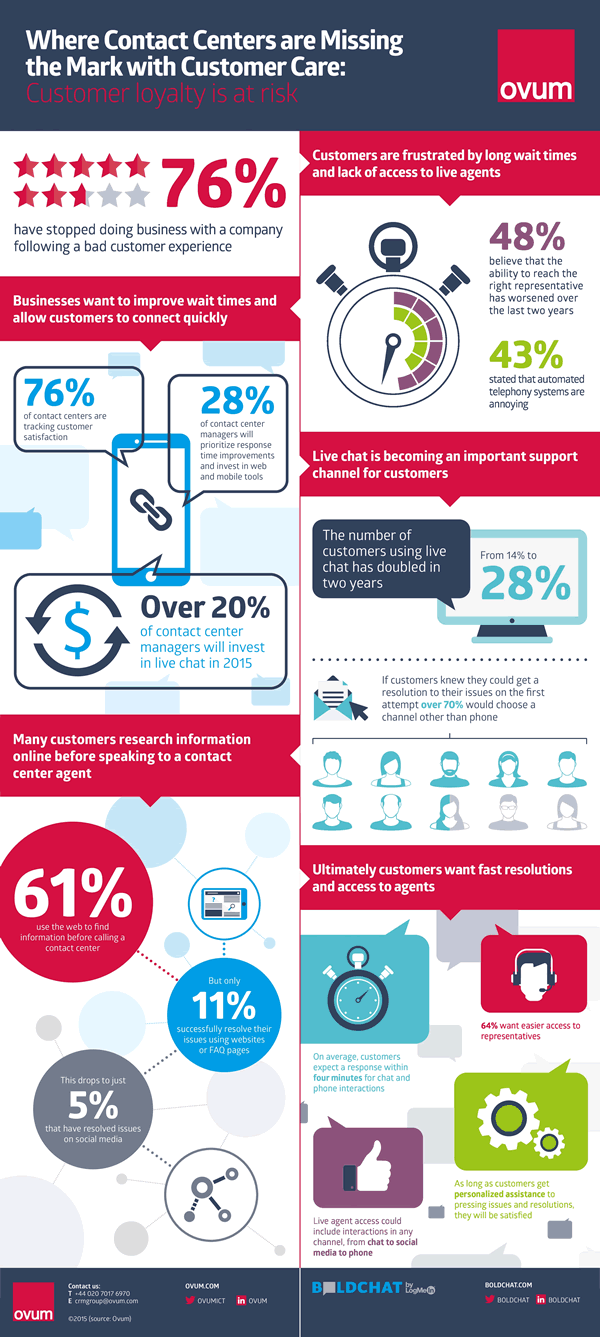Contact centers are facing numerous challenges as customers become more expecting, display channel-agnostic behavior and use an increasing number of unstructured communication channels and data formats.
As the contact center keeps going through digital transformations whereby “simple” tasks and processes get automated, channel preferences gradually shift and the fight to gain acceptance as a center of value creation, rather than a cost center, continues the end-to-end customer experience becomes key. According to data from OVUM – and many others – customers want fast and easy answers to their questions and to the right contact center agent (routing).
With new technologies entering the contact center and an increasing focus on customer-oriented metrics such as the Customer Effort Score, in practice there is still a lot of work to do.
According to OVUM, 76% of contact centers today are tracking customer satisfaction (CSAT) scores. But is it enough as the end-to-end customer experience clearly starts becoming more important and 76% of customers have stopped doing business with a company following a bad customer experience?
Shifting contact center channel preferences – the place of chat and social
Regarding channel preferences, OVUM confirms that web chat or live chat becomes more important. Over 20% of contact center managers plan to invest in it in 2015.
Self-service
The research also confirms that many customers research information online before speaking to a contact center agent. 61% use the web to find information before calling a contact center. Yet, only 11% successfully resolve their issues using web sites or FAQ sections. There is definitely a case to improve self-service and make it easier and more accessible.
Social customer service
Also in regards to social customer service there is a lot of room for improvement as the percentage of customers having resolved issues on social media drops to 5%.
In practice, social customer service de facto is often used as a way to relieve the contact center and deflect calls (and thus reduce costs). Most organizations also try to bring social customer service requests to private interactions, for instance via web chat.
The future of social customer service in the contact center is still unsure. Today it is often still siloed and discussions whether it should be integrated in the contact center or best remains separate (but “connected”) are not conclusive and the answers depend on the context. Nevertheless, various contact center surveys show that many contact centers plan to integrate social customer service in 2015 as the contact center becomes a relationships hub.
Live chat
Most attention, however, goes to chat. And it’s no different in OVUM’s research which found that the number of customers using live chat has doubled in two years.
An interesting finding is that, if customers knew they could get a resolution to their issues on the first attempt, over 70% would use another channel than the phone. 43% of respondents find automated telephony systems are annoying.
More in the infographic below, made by LogeMeIn, and in the OVUM paper on the Boldchat website of LogMeIN. It probably won’t come as a surprise that omni-channel, cross-channel behavior, the connected customer and of course live chat play a key role in that paper.


